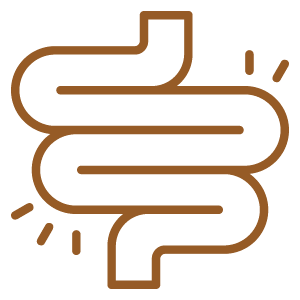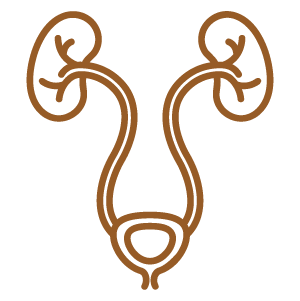Barnes, J., Anderson, L. A., & Phillipson, J. D. (2007). Herbal medicines (3rd ed.). Pharmaceutical Press. https://naturalingredient.org/wp/wp-content/uploads/HerbalMedicines,Thirdedition-JoanneBarnesJ.DavidPhillipsonLindaA.Anderson.pdf
Bok, S.-H., Cho, S. S., & Park, K.-M. (2017). Safety of 8-weeks oral administration of Arctium lappa L. Laboratory Animal Research, 33, 251-255. https://doi.org/10.1186/s42826-017-0005-6
Bryson, P. D., et al. (1978). Burdock root tea poisoning. Case report involving a commercial preparation. JAMA, 239(22), 2157-2158. https://pubmed.ncbi.nlm.nih.gov/642161/
Chan, Y.-S., Cheng, L.-N., Wu, J.-H., Chan, E., Kwan, Y.-W., Lee, S.M.-Y., Leung, G.P.H., & Chan, S.-W. (2010). A review of the pharmacological effects of Arctium lappa (burdock). Inflammopharmacology, 19(5), 245-254. https://doi.org/10.1007/s10787-010-0062-4
European Medicines Agency. (2010). Community herbal monograph on Arctium lappa L., radix. https://www.ema.europa.eu/en/documents/herbal-monograph/final-community-herbal-monograph-arctium-lappa-l-radix_en.pdf
Ha, M.S., Yook, J.S., Lee, M., Suwabe, K., Jeong, W.M., Kwak, J.J., & Soya, H. (2021). Exercise training and burdock root (Arctium lappa L.) extract independently improve abdominal obesity and sex hormones in elderly women with metabolic syndrome. Scientific Reports, 11(1), 1-10. https://doi.org/10.1038/s41598-021-84301-x
Knott, A., Reuschlein, K., Mielke, H., Wensorra, U., Mummert, C., Koop, U., & Gallinat, S. (2008). Natural Arctium lappa fruit extract improves the clinical signs of aging skin. Journal of Cosmetic Dermatology, 7(4), 281-289. https://doi.org/10.1111/j.1473-2165.2008.00407.x
Li, D., Kim, J.M., Jin, Z., & Zhou, J. (2008). Prebiotic effectiveness of inulin extracted from edible burdock. Anaerobe, 14(1), 29-34. https://doi.org/10.1016/j.anaerobe.2007.10.002
Matsumoto, T., Hosono-Nishiyama, K., & Yamada, H. (2006). Antiproliferative and apoptotic effects of butyrolactone lignans from Arctium lappa on leukemic cells. Planta Medica, 72(3), 276-278. https://doi.org/10.1055/s-2005-916174
McIntyre, A. (2019). The complete herbal tutor: The definitive guide to the principles and practices of herbal medicine. Aeon.
Miele, C., & Beguinot, F. (2012). New expectations from the well-known medicinal properties of Arctium lappa. Diabetologia, 55(5), 1244-1246. https://doi.org/10.1007/s00125-012-2503-7
Milani, E., Koocheki, A., & Golimovahhed, Q. A. (2011). Extraction of inulin from Burdock root (Arctium lappa) using high intensity ultrasound. International Journal of Food Science & Technology, 46(8), 1699-1704. https://doi.org/10.1111/j.1365-2621.2011.02673.x
Sohn, E.-H., Jang, S.-A., Joo, H., Park, S., Kang, S.-C., Lee, C.-H., & Kim, S.-Y. (2011). Anti-allergic and anti-inflammatory effects of butanol extract from Arctium lappa L. Clinical and Molecular Allergy, 9(1), 4. https://doi.org/10.1186/1476-7961-9-4
Susanti, S., Iwasaki, H., Itokazu, Y., Nago, M., Taira, N., Saitoh, S., & Oku, H. (2012). Tumor specific cytotoxicity of arctigenin isolated from herbal plant Arctium lappa L. Journal of Natural Medicines, 66(4), 614-621. https://doi.org/10.1007/s11418-012-0628-0
Tsai, W.-J., Chang, C.-T., Wang, G.-J., Lee, T.-H., Chang, S.-F., Lu, S.-C., & Kuo, Y.-C. (2011). Arctigenin from Arctium lappa inhibits interleukin-2 and interferon gene expression in primary human T lymphocytes. Chinese Medicine, 6(1), 12. https://doi.org/10.1186/1749-8546-6-12
Wang, H.Q., Jin, J.J., & Wang, J. (2014). Arctigenin enhances chemosensitivity to cisplatin in human nonsmall lung cancer H460 cells through downregulation of survivin expression. Journal of Biochemical and Molecular Toxicology, 28(1), 39-45. https://doi.org/10.1002/jbt.21533
Zick, S. M., Sen, A., Feng, Y., Green, J., Olatunde, S., & Boon, H. (2006). Trial of Essiac to ascertain its effect in women with breast cancer (TEA-BC). Journal of Alternative and Complementary Medicine, 12(10), 971-980. https://doi.org/10.1089/acm.2006.12.971















